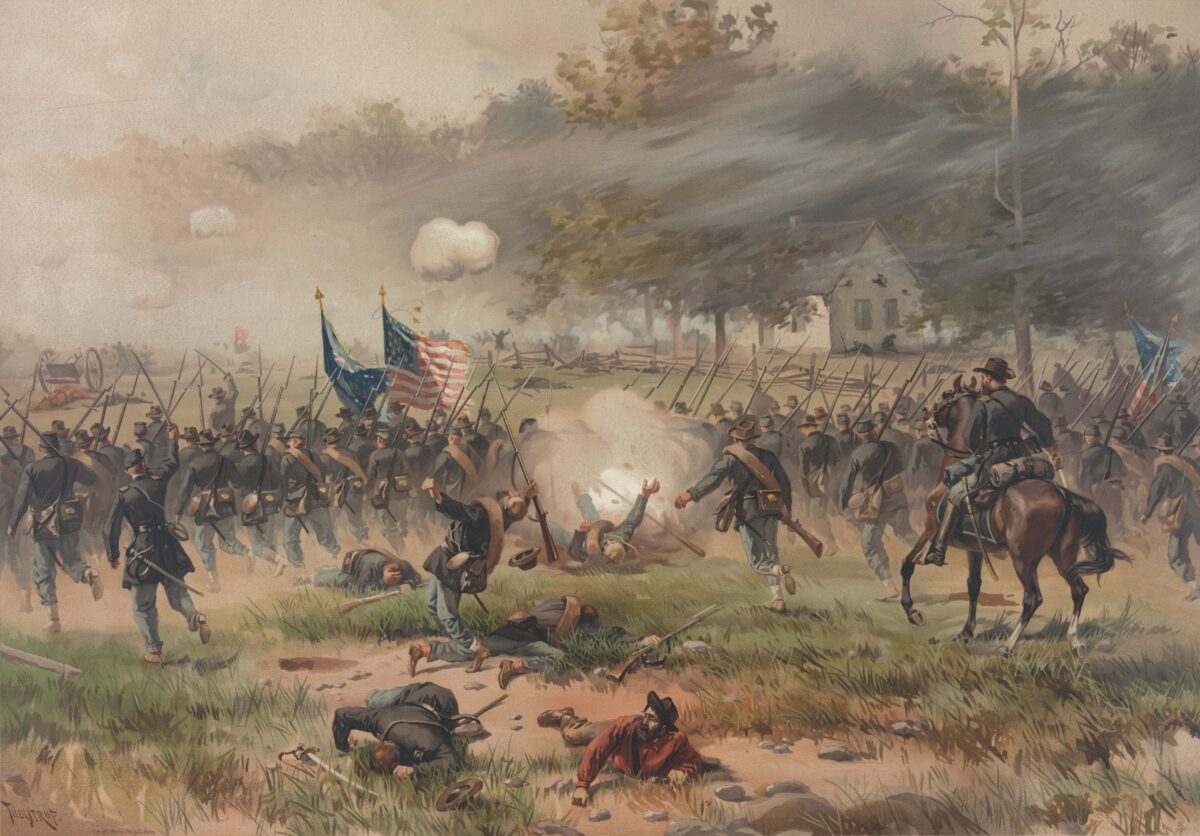The Battle of Antietam on September 17, 1862, is often thought of as four separate groups of fighting: The Cornfield, Maj. Gen. John Sedgwick’s West Woods disaster, the fight for the Sunken Road, and then the Union capture of Burnside Bridge and the stunning Confederate counterattack that ended the fight. Often lost within the violent shuffle was hard fighting that took place around noon, just east of the Dunker Church, when an Army of the Potomac 6th Corps brigade led by Colonel William H. Irwin counterattacked Confederate troops who had driven back regiments from the 12th Corps.
The 6th Corps had broken camp near Rohrersville about 5:30 a.m. on the 17th, and headed toward the battlefield with Maj. Gen. William Smith’s 2nd Division in the lead. Smith’s troops arrived on the field about midday, and it wasn’t long before Irwin’s brigade comprising the 20th, 33rd, 49th, and 77th New York, and the 7th Maine was clearing the East Woods and guiding down the Smoketown Road into a haze of smoke and gunfire.
The Union brigade took it on the chin in this action, enduring more than 300 casualties. According to Colonel Irwin, the 20th New York of his command lost an astounding number of killed and wounded. As he wrote in his battle report on September 22: “The Twentieth New York Volunteers by its position was exposed to the heaviest fire in line, which it bore with unyielding courage and returned at every opportunity. The firmness of this regiment deserves very great praise. Colonel [Ernst] Von Vegesack was under fire with his men constantly, and his calm courage gave an admirable example to them. Each of their stand of colors is rent by the balls and shells of the enemy, and their killed and wounded is 145. This regiment was under my own eye in going into action and frequently during the battle, and I take pleasure in strongly testifying to its bravery and good conduct.”
That fighting, though, has been treated as a footnote or outright ignored in the major histories of the battle. James Murfin’s 1965 The Gleam of Bayonets does not mention it, and it only warrants a paragraph in Stephen Sears’ 1983 Landscape Turned Red. Map studies of Antietam also pay little heed to the sacrifice of Irwin’s brigade. Bradley Gottfried’s The Maps of Antietam does not show details of Irwin’s advance toward the Hagerstown Pike, nor do the maps in the above-mentioned books. Murfin does, though, include the final position of Irwin’s brigade on one map. The maps of the highly regarded Antietam on the Web website do not indicate Irwin’s role in the fight.
All of this matters for several reasons. One, it is still a common misconception that Maj. Gen. George B. McClellan kept the entire 6th Corps in reserve and its regiments did not see action or were very lightly engaged. Another assumption is that by late afternoon this fighting on the northern end of the battlefield had died down and had entirely shifted to the Sunken Road.
And lastly, as will be discussed on the following pages, it is very possible that one of the iconic images taken of Antietam dead after the battle, and one of the few to show Union corpses, actually shows men of the 20th New York of Irwin’s brigade. That conclusion, as will be seen, is the cumulation of years of research by photo historians and the recent discovery of primary source material, notably the recently discovered Simon G. Elliott map of battlefield burials. The following excellent summary of the fight undertaken by William Irwin’s men is from the just released, Brigades of Antietam: The Union and Confederate Brigades at the Battle of Antietam, edited by Bradley M. Gottfried. Ironically, this fine book also does not include any detailed account of Irwin’s battle movements in its map section.





